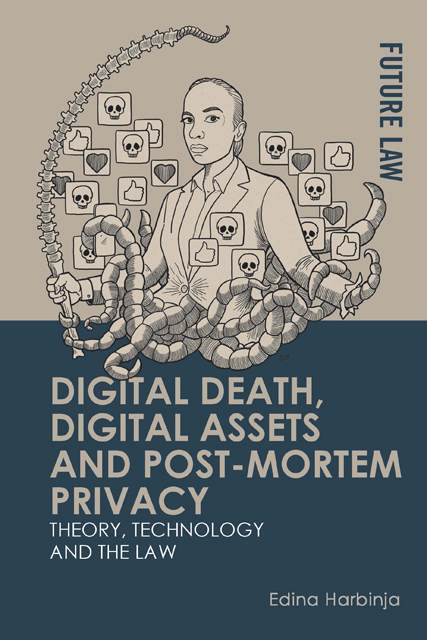Book contents
- Frontmatter
- Contents
- Acknowledgements
- Table of Cases
- Table of Legislation
- 1 Introduction
- 2 Theoretical Underpinnings: Property
- 3 Theoretical Underpinnings: Autonomy, Testamentary Freedom and Post-Mortem Privacy
- 4 Social Networks
- 5 Games, Virtual Worlds and Virtual Realities
- 6 Emails
- 7 Conclusion
- Bibliography
- Index
2 - Theoretical Underpinnings: Property
Published online by Cambridge University Press: 25 April 2023
- Frontmatter
- Contents
- Acknowledgements
- Table of Cases
- Table of Legislation
- 1 Introduction
- 2 Theoretical Underpinnings: Property
- 3 Theoretical Underpinnings: Autonomy, Testamentary Freedom and Post-Mortem Privacy
- 4 Social Networks
- 5 Games, Virtual Worlds and Virtual Realities
- 6 Emails
- 7 Conclusion
- Bibliography
- Index
Summary
This chapter sets out a basic conceptual foundation for this book, which will be used in the case study chapters to determine the fundamental question of the nature of assets exemplified in this book. We will consider whether certain types of digital assets fit within the notion of property and consequently transmit on death like some of the more traditional types of property.
Suppose digital assets analysed in this book are found to be property or protected by IP rights (copyright in particular). In that case, their transmission is clear: property transmits on death, and copyright protection lasts for many years post-mortem (seventy years in the referent jurisdictions, US and UK). To confirm or discard this proposition for each of the case studies, we will explore the meaning of property, its incidents and justifications in this chapter. This discussion will be further applied to examine whether social networks, emails, games and virtual world asserts are property objects.
The analysis sits alongside the discussion in Chapter 3, where autonomy and privacy are examined as further examples of the conceptual underpinning of the book. I, however, do not rely on any claim about the relationship between property, privacy and autonomy. I make no claim, for example, that autonomy underpins property or that the concept of privacy somehow ‘mediates’ between the concepts of autonomy and property. Instead, property is examined from various angles simply to determine whether virtual assets could (doctrinal question) and should (normative question) be regarded as property. If the answer to either of these questions is ‘yes’, then these assets can be transmitted on death by testate and intestate succession laws. If the answer is ‘no’, because some assets are primarily made of information and personal data that cannot constitute property, privacy and autonomy take precedence in this conceptual framework.
This chapter will not discuss copyright from a theoretical perspective. The reason for this is that copyright’s transmission on death is clear and settled in law, so if a digital asset meets copyright protection requirements, this right will be passed on to the heirs of a deceased user. Instead, the chapters discussing case studies will assess whether some of their content satisfies copyright requirements from a doctrinal perspective. Although the transmission of property is also evident, property features are not as settled or harmonised in law or theory.
- Type
- Chapter
- Information
- Digital Death, Digital Assets and Post-Mortem PrivacyTheory, Technology and the Law, pp. 16 - 51Publisher: Edinburgh University PressPrint publication year: 2022



